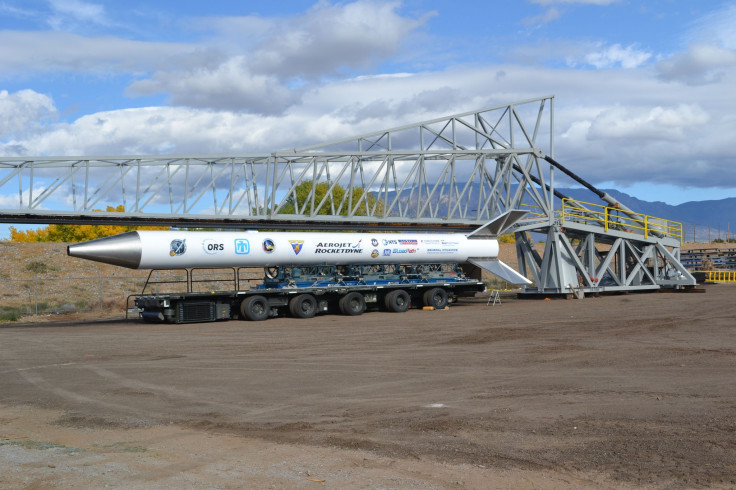Experimental Super Strypi Rocket Launch Fails In First Test Flight

An experimental U.S. military rocket carrying a swarm of tiny spacecraft broke apart over Hawaii just after launch late Tuesday night. The launch was the first test flight for the U.S. Air Force's Operationally Responsive Space Office's Super Strypi rocket. Officials are currently investigating the cause of the failure, according to Spaceflight Now.
The Super Strypi launch vehicle was designed to be a cost-effective solution for launching rockets carrying small satellites into orbit. Using a 135-foot rail launcher, Super Strypi could send multiple rockets into space with each mission. The efficient launches would reduce costs while reducing the time for each launch.
Super Strypi launched from the U.S. Navy's Pacific Missile Range Facility at 10:45 p.m. EST. A minute into the flight, the rocket began to tumble around before breaking apart, Spaceflight Now reported.
Tuesday's mission was carrying a payload of small satellites developed by NASA, the University of Hawaii, St. Louis University, Montana State University, Utah State University and a commercial CubeSat.
NASA's Edison Demonstration of Smallsat Networks (EDSN) mission was a swarm of eight small satellites -- roughly the size of a tissue box -- each carrying an Energetic Particle Integrating Space Environment Monitor that measured charged particle events -- caused by solar wind or a coronal mass ejection from the sun -- in low Earth orbit, according to NASA.
The University of Hawaii's HiakaSat was developed by 150 students. The satellite was a hyperspectral imager used for Earth observations. "You are going to be able to tell things like weather, ocean temperatures; you are going to be able to discriminate things like lava flows on volcanoes and things and that’s what we’re really interested in — the environmental effects of different things going on in the planet," Luke Flynn, University of Hawaii's Hawaii Space Flight Laboratory director, said in an interview with the Garden Island.
Tuesday's launch marked the first from the U.S. Navy facility and the first from Hawaii. A second experimental launch is expected for 2016, NASA SpaceFlight reported.
© Copyright IBTimes 2025. All rights reserved.




















